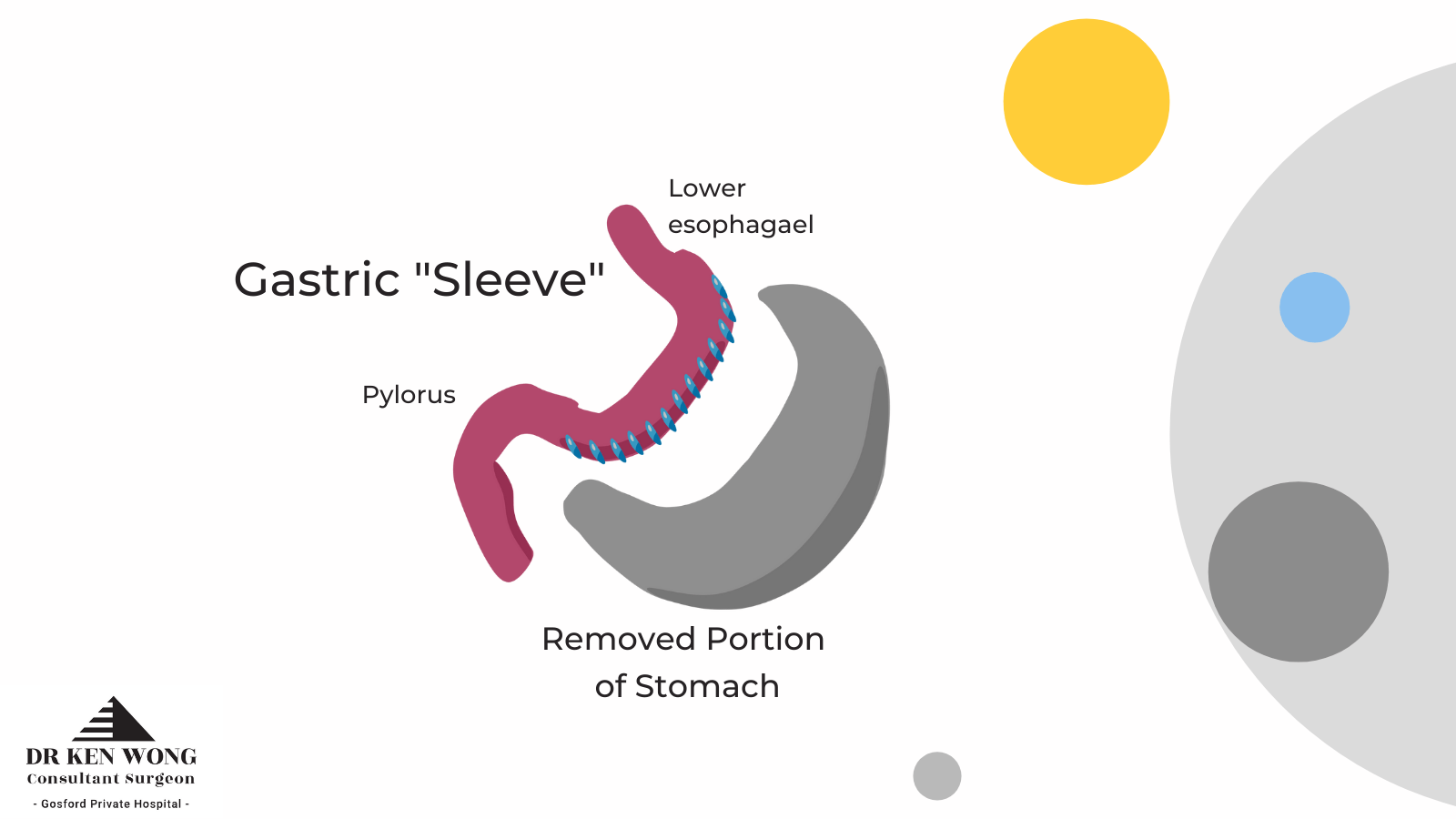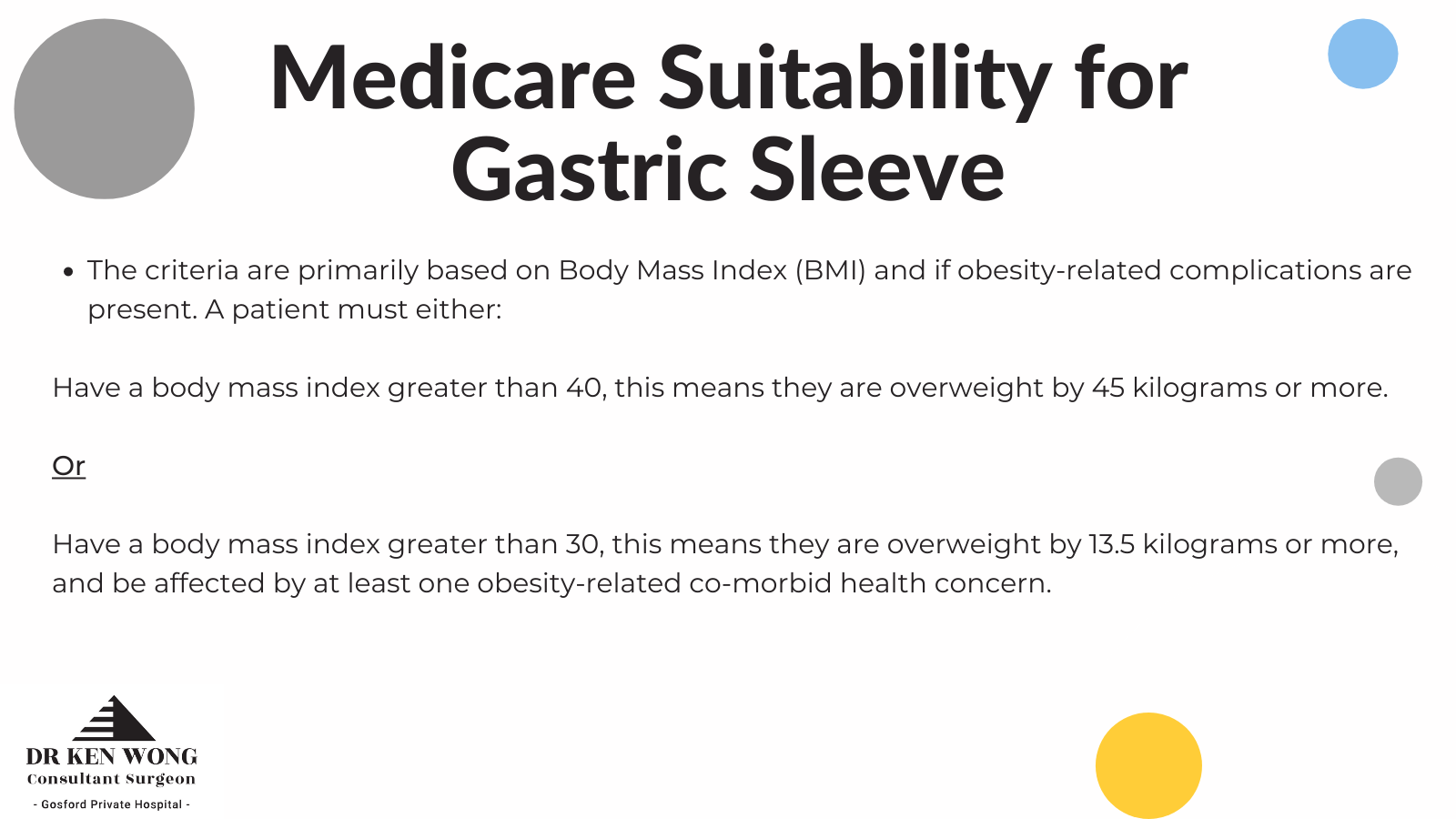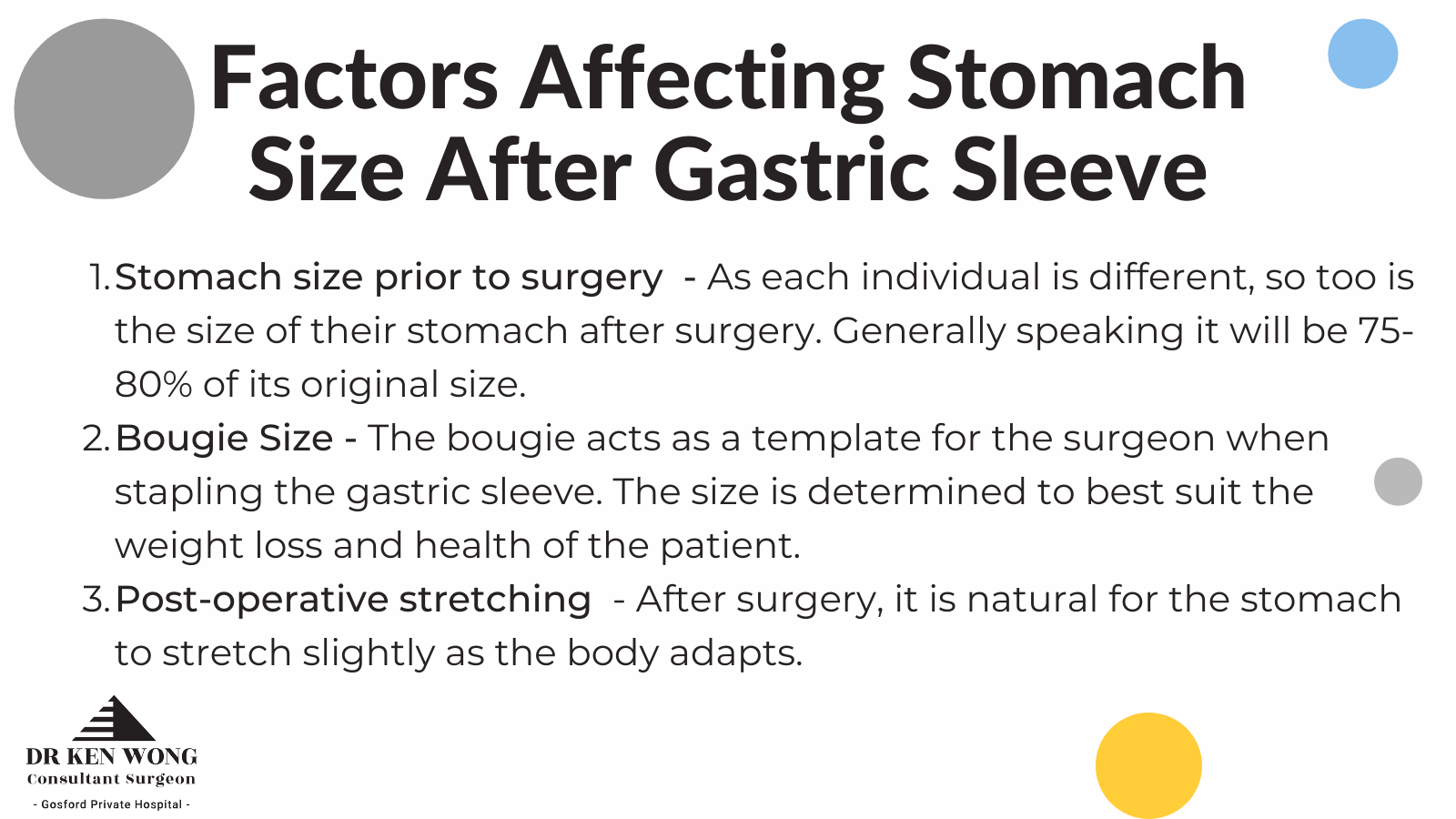While many people are aware of what gastric sleeve surgery or sleeve gastrectomy is, they often ask, “How is the stomach removed in gastric sleeve procedures?”. Before undertaking a metabolic and bariatric surgery of any kind, it is always essential to understand the processes that will occur during your procedure and the ensuing body weight effects.
In this article, we will cover the processes during a gastric sleeve surgery, and answer several frequently asked questions, including “How big is your stomach after a Gastric Sleeve?”.
Let’s start with the basics:
How Is the Stomach Removed in Gastric Sleeve?
A gastric sleeve operation or sleeve gastrectomy is a bariatric surgery and a surgical procedure that removes part of your stomach and reduces its overall size to assist weight loss. Performed via keyhole, this procedure is known as a laparoscopic operation. A small incision is made in the abdomen, and the surgeon passes a laparoscope and other instruments needed to perform the gastric sleeve surgery through this opening. Using these tiny openings, the surgeon manipulates the stomach, reducing it in volume, and removing the upper section from the body.
During the laparoscopic sleeve gastrectomy, a tube is inserted into the stomach through the mouth to remove all food, gas, and liquid before any incisions. This allows the stomach to decompress and makes it easier to operate on. After the stomach has been decompressed, the surgeon can begin making incisions and inspect the stomach.
After this, small keyhole incisions in the abdominal wall are made for the placement of trocars. A trocar is a medical device consisting of an awl, canula and a seal. These are used during laparoscopic gastric sleeve surgery and provide access points for the surgeon.
Using these incisions, the stomach is inspected, and the blood vessels to the lateral side of the stomach are divided.
After this, a bougie tube is inserted, providing a template for which the surgeon uses to create the new stomach.
So, how is the stomach removed in gastric sleeve procedures?
Well, starting 4-6 cm away from the Pylorus, a stapler is used to divide the stomach into sections. The pylorus is the valve between the stomach and the small intestine. Once the surgeon has completed their stapling path up to the top of the stomach, the upper part of the stomach is decompressed and removed via one of the trocars. This removed section is approximately 75-80% of the original stomach leaving the new stapled stomach at about 20-25% of its original volume.
The benefit of performing sleeve gastrectomy via keyhole is it reduces scarring and recovery time. This is because the smaller incisions will result in less bruising, pain, and disturbance to the rest of the body.

Gastric Sleeve Explained
So that answers the question of, “How is the stomach removed in gastric sleeve?”; but what about the "why?"
A gastric sleeve operation limits the amount of food you need to eat to feel full. The procedure is completed with the patient under a general anaesthetic, and individuals who undergo gastric sleeve surgery can generally return to normal levels of activity within a few weeks. The operation does not involve the placement of any foreign material like a gastric band and is irreversible.
Not only does gastric sleeve surgery reduce the size of the stomach and allow for feelings of satiety to be reached with less food, but it also removes parts of the stomach that produce ghrelin. Ghrelin is produced by the enteroendocrine cells and is also known as the “hunger hormone.” Ghrelin is highest before mealtime and signals to your brain that your body is hungry. Removing the portion of the stomach responsible for its production reduces the chances of obesity behaviours such as binge eating and overconsumption.
Gastric sleeve surgery is also beneficial towards other health outcomes such as controlled obesity-related health conditions, including:
- Hypertension
- High cholesterol
- Diabetes
- Depression
- Back Pain
- Sleep apnoea
So, while it supports physical weight loss, a gastric sleeve procedure supports the management and elimination of many other obesity-related health problems. The amount of weight loss after sleeve gastrectomy will depend on various factors such as age, pre-surgery weight, level of obesity, general health, ability to exercise and long-term commitment to a healthy lifestyle.
Suitability of Gastric Sleeve
It is not only important to answer, “How is the stomach removed in Gastric Sleeve?” But also, “Who is most suitable for this kind of procedure?” This form of bariatric surgery is particularly beneficial for people who have struggled with obesity and have struggled to lose weight using other weight loss methods and exercise regimes.

Gastric sleeve surgeries are performed in both public and private hospitals, with Medicare able to cover part of the costs if the patient can satisfy obesity guidelines. The criteria are primarily based on Body Mass Index (BMI) and if obesity-related complications are present. A patient must either:
- Have a body mass index greater than 40, this means they are overweight by 45 kilograms or more.
Or
- Have a body mass index greater than 30, this means they are overweight by 13.5 kilograms or more, and be affected by at least one obesity-related co-morbid health concern.
Recovery After Your Procedure
With a keyhole gastric sleeve surgery procedure, patients can typically go home the day after their surgery, regardless of how much the stomach has been removed. The following weeks will consist of a slow return to normal activities and integration of new dietary considerations. For more information on the recovery process and return to activity after gastric sleeve, check out our article on when you can start exercising after gastric sleeve surgery.
How Big Is Your Stomach After Gastric Sleeve?
Between 75- 80% of your stomach is removed during the bariatric surgery, with the remaining portion stapled together and formed into a sleeve. After this, the stomach has a volume of approximately 90ml. As every individual is different, so are their surgeries. The amount of stomach safely removed depends on various factors including:
Stomach Size Prior to Surgery:
The size of the stomach after a gastric sleeve procedure is informed by the size of the original stomach. As each individual is different, the percentage of the stomach removed during the procedure will be determined by the surgeon. As this is percentage-based, more often than not, the larger your stomach was before the gastric sleeve surgery, the larger it will be post-op.

Bougie Size:
How big is the stomach after gastric sleeve? Well, one of the factors affecting this is bougie size. A bougie is a flexible tube used during a gastric sleeve procedure to measure the amount of stomach that needs to be removed. The bougie is inserted orally through the mouth and into the pylorus. The surgeon chooses bougie size to ensure maximum rapid weight loss results while not jeopardising the health and safety of the patient.
Post-operative Stretching:
It is natural for the stomach to stretch after weight loss surgery as the body adapts to the needs of the digestive system. While some individuals may be confronted by this, it is essential to focus on more critical health metrics such as high blood pressure, blood sugar and sleep quality.
How Big Is the Stomach After Gastric Sleeve vs Gastric Bypass?
Due to the differences in outcomes and how the procedures are conducted, a gastric sleeve operation will leave a patient with a bigger stomach than a gastric bypass surgery. The gastric sleeve is considered less risky and more affordable for patients. However, it is always essential to consult the services of a qualified medical professional if you are thinking of undergoing any bariatric surgery. A qualified bariatric surgeon will be able to conduct the necessary tests to ensure you are eligible for gastric sleeve surgery and identify alternative treatments that may be more suitable to you.
The main advantage of gastric sleeve surgery is that it does not require manipulating the stomach and small bowel to create a new connection. This connection is known as an anastomosis. There is also less risk of long-term complications with a gastric sleeve procedure than a gastric bypass surgery. With no anastomosis, there is a close to zero risk of internal hernia or marginal ulcers. With adequate diet and nutrition and consultation with qualified medical professionals, a patient should be able to achieve their weight loss goals and provide their body with all the nutrition it needs.
How Do I Choose the Right Surgeon?
We hope that answers your queries to gastric sleeve operation how much stomach is removed and the reasons for doing so.
When undergoing any type of surgery, it is important that you choose a surgeon you trust and who understands your situation. As weight loss surgery is all but one part of a longer journey, it is important that your weight loss surgeon works closely with dieticians, weight loss physicians and exercise physiologists. Having a team of medical professionals across all stages of your journey will provide you with a support network and the appropriate medical guidance as you progress after gastric sleeve surgery.
It is also essential to ask whether your surgeon has had formal bariatric surgery training and experience. Qualified surgeons will be able to have gastric sleeve explained to you, including details on the gastric sleeve cost, and perform a range of weight loss surgeries that best cater to your situation.
If you are considering weight loss surgery, including the Gastric Sleeve procedure, banding or gastric bypass surgery, get in touch with us today. Dr Ken Wong and the team at Central Coast Surgery are committed to providing the best sleeve gastrectomy treatment and surgical procedures to their patients. We will discuss the various options available to candidates and determine the best scourse of action for their situation. For more information on sleeve gastrectomy or to book a consultation, contact the Central Coast Surgery team today
